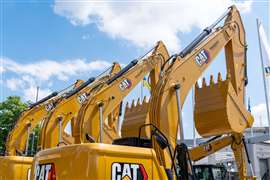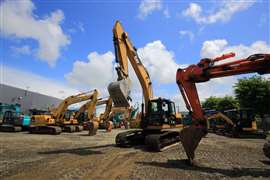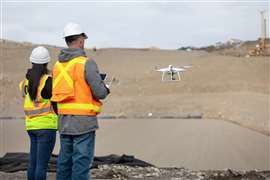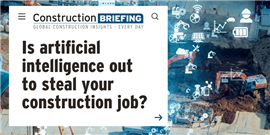Editor's Comment: Stage V engine regulations
18 May 2015
Construction equipment exhibitions always seem to throw up a few surprises. That was certainly true of last month’s Intermat exhibition, where I saw an increasing number of all-electric construction machines and tools, particularly at the lighter end of the market, as well as the world’s first production hybrid wheeled loader, which was presented by Hitachi.
All this and more is covered in this month’s equipment pages, and there is a lot more coverage online at www.khl.com, with all of our daily news coverage from the show, as well as numerous videos.
I found it quite striking that the industry has found the time and money to innovate like this at a time when global markets are not great – particularly for those exposed to the mining sector – and when the heavy burden of Tier 4 Final/Stage IV emissions laws have weighed on pretty much all manufacturers.
With the implementation of Stage IV coming to an end, there should be more R&D budgets freed up for other projects. That could mean more fuel-saving hybrid machines coming onto the market, or more high technology being introduced in the machine control and telematics area. Or who knows what.
But just when you thought it was safe to forget about engine emissions laws for the first time in 15 or 20 years, Stage V has reared its head in Europe.
Nothing is set in stone, but at the moment it looks like these new regulations will come into force in 2019 and 2020. They are targeted at reducing levels of very fine particulates in exhaust streams and will apply to all engine types and sizes in off-highway equipment, not just 19 – 560 kW diesel engines.
Engine manufacturers and equipment makers seem confident they can meet these requirements, which are similar to the Euro 6 laws for trucks, however, there is a very big worry for equipment owners buried in the regulations.
Under legislation to date, if a machine needs a new engine, it can be replaced with a unit of the same Stage as the one originally fitted. However, under the new laws there is no provision for ‘old stage’ replacement engines.
This is a crucial point. Replacing an engine in a construction machine is not like changing a battery in a torch. The steady drip of legislation over the years has seen engines get much bigger and more complicated, requiring ever-more sophisticated software to run them and changing requirements for cooling systems.
You simply can’t drop a Stage IV engine into a machine originally fitted with a Stage II engine ten years ago. It won’t fit (by a long way!) and there won’t be the electronic and cooling systems on-board to allow it to run. With no replacement engine provision in the Stage V laws, whole machines would have to be scrapped if the engine has an un-repairable failure.
So this is a big issue, and one which the industry is lobbying hard on as new laws are modified and finalised.
It is one to watch, and one which could have a big impact on contractors and rental companies.







